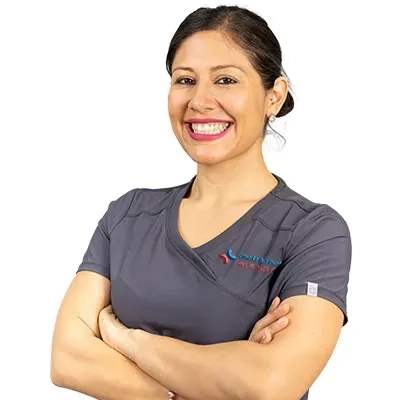8 Ways to Redesign Clinical Workflows for Improved Efficiency While Maintaining Quality Care
Healthcare organizations face mounting pressure to improve operational efficiency without compromising patient care quality. This article presents eight proven strategies for redesigning clinical workflows, drawing on insights from experts who have successfully implemented these changes in real-world settings. From digital intake systems to AI-powered scheduling tools, these approaches demonstrate how technology and process optimization can free up staff time while enhancing the patient experience.
Digital Intake System Streamlined Patient Registration
Redesigning a clinical workflow requires balancing efficiency with patient-centered care. When I worked on improving a clinic's appointment management process, we noticed that long wait times and overlapping tasks were slowing down operations and affecting patient satisfaction.
The first step was to map out the entire patient journey, from scheduling to checkout, and identify bottlenecks. We discovered that manual intake forms and inconsistent communication between front-desk staff and medical assistants were causing significant delays.
To address this, we implemented a digital intake system that allowed patients to complete forms before their visit. This small change streamlined registration, reduced paperwork errors, and freed up front-desk time for personalized patient interaction.
We also introduced real-time task tracking through an internal dashboard that displayed patient status, checked in, in-room, or awaiting a provider. This gave both clinical and administrative staff better visibility, helping them coordinate care more efficiently.
One of the most impactful changes was reorganizing provider schedules based on appointment type and complexity. Shorter follow-up visits were grouped together, while new consultations were given longer slots. This reduced scheduling conflicts and improved the flow of patient care throughout the day.
The results were significant: average patient wait times dropped by nearly 30%, providers had fewer interruptions, and staff reported less stress managing daily operations. Most importantly, patients experienced smoother, more attentive care without feeling rushed.
Redesigning a workflow doesn't mean cutting corners; it's about creating systems that respect both time and quality. By using technology thoughtfully and refining team coordination, we achieved a process that enhanced productivity while maintaining the compassion and attention that define excellent care.

Pre-Visit Forms Enhanced Meaningful Patient Conversations
One of the most meaningful ways I've redesigned a clinical workflow to improve efficiency while maintaining high-quality care was by streamlining the patient intake and follow-up process. Previously, a lot of information gathering happened during the visit itself, which often extended appointment times and left less room for meaningful conversation.
The most impactful change was implementing a pre-visit digital intake system. Patients now complete their history, symptoms, and medication details before they walk into the clinic. This simple shift has made a tremendous difference. It allows the care team to review concerns in advance, identify what requires deeper attention, and prepare more thoroughly for the visit.
This redesign not only improved efficiency but also strengthened the overall patient experience, proving that operational improvements and quality care can go hand in hand.
Mobile Model Brought Wound Care Home
For many patients who are elderly, homebound, or living in long-term care facilities, accessing traditional, facility-based wound care can be challenging. To make treatment more accessible and efficient, we restructured our workflow around a fully mobile model that brings wound care directly to the patient, eliminating the need for a physical office.
Our team uses secure digital platforms to document wound progress, share images, and communicate care updates in real time. This has reduced delays, improved coordination among providers, and allowed us to respond more quickly to changes in a patient's condition.
The most meaningful improvement came from adopting a centralized digital scheduling and record-keeping system. It cut down on repetitive paperwork and scheduling gaps, giving our experts more time to focus on patient interaction and hands-on care. These workflow changes have helped us maintain quality outcomes while improving the overall care experience.
Text Check-In Cleared Front-End Visit Clutter
At Best Direct Primary Care the biggest leap in efficiency came from reworking how we start each visit. We realized the first five minutes were getting clogged with repeated questions, chart hunting, and fixing small misunderstandings that should have been sorted earlier. Instead of adding new software or pushing the team harder, we redesigned the front end. Patients complete a short, conversational check in through text before they arrive. It covers symptoms, meds, refills, sleep, stress, and anything they want to talk about. When they walk in, we already know the direction of the visit and can skip the backtracking that eats up time.
The most impactful change was pairing that check in with a redesigned room flow. Charts open to a clean snapshot of the patient's recent labs, vitals, and goals so we are not digging through tabs. The nurse hands off with a quick verbal summary instead of a long note volley. That alone saved minutes every visit and lowered the sense of rush in the room. Quality improved because we spent more time actually talking to the patient and less time wrestling with the chart. Direct care gives us the freedom to shape workflows around humans instead of systems, and that shift keeps the day steady without losing the depth of care people come to us for.

Single Screen Unified Medication Dispensing Tasks
At A S Medication Solutions, the workflow redesign that made the biggest impact came from looking at how many tiny handoffs were slowing clinics down. Medication dispensing touches providers, nurses, front desk staff, and sometimes billing, and every extra step adds another chance for delays or mistakes. We sat with teams during busy hours and watched where the momentum broke. The most consistent issue was that staff had to jump between systems to confirm stock, check instructions, document the dispense, and then update internal notes. None of those tasks were difficult on their own, but the switching drained time and attention.
The most impactful change was pulling those scattered pieces into one uninterrupted flow. We built a single screen that shows real time stock, auto populates key documentation fields, and guides staff through the compliance steps without forcing them to pause or search for information. Clinics no longer had to backtrack or recheck details, and the rhythm of the visit stayed intact. Quality improved because people were no longer rushed or distracted. Efficiency improved because the workflow matched the way clinics actually move, not the way a software diagram assumed they worked. That alignment turned out to be the quiet difference that lifted the entire process.

Proactive Scheduling Replaced Reactive Treatment Patterns
We restructured our workflow around proactive scheduling rather than reactive treatment. Instead of waiting for patients to reach out, our team now uses membership data to anticipate follow-ups, lab renewals, and chronic condition check-ins. This shift reduced last-minute appointments and improved continuity of care. The most impactful change was consolidating communication—lab results, prescriptions, and visit summaries now flow through a single digital platform accessible to both patients and clinicians. It eliminated redundant phone calls and paperwork while keeping every interaction documented and transparent. Efficiency improved, but the greater gain came in patient satisfaction. With fewer administrative barriers, providers spend more time listening, and patients feel seen instead of processed. At RGV Direct Care, that human time is the most valuable efficiency we've achieved.

Automation Freed Staff for Direct Patient Care
To increase efficiency and care delivery, I reformed a clinical workflow incorporating a digital patient management system. My former system was a paper-based structure that was slow and subject to mistakes and thus I proposed a software solution which enabled real time update, scheduling of appointments and managing electronic health record (EHR) in the electronic system.
The change that had the greatest effect was the automation of routine processes like the appointment reminders, patient intake forms and follow-ups. This lightened the load on the administration, decreased human error and gave the staff more time to attend to direct patient care. It will help us to reduce the number of patients waiting by utilizing the process in a more efficient way and provide a better overall satisfaction without compromising the quality of the provided care.

AI Chatbots Handle Routine Scheduling and Prescriptions
We've started using AI chatbots as our first line of patient contact for scheduling, prescriptions, and follow-up questions, and it's made a huge difference in efficiency and patient experience. Basic clerical tasks like scheduling appointments and calling in prescriptions are easier than ever, and aren't taking up valuable receptionist or nurse work time. Serious issues get escalated much more quickly thanks to sentiment analysis, meaning we can get right back to people who need immediate help.




